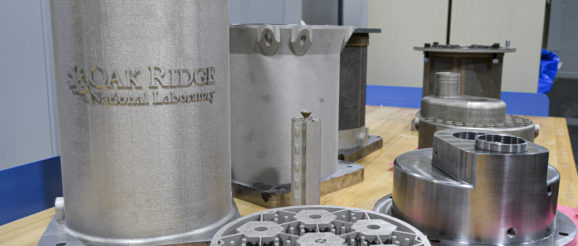US aims to complete first 3D-printed micro-reactor by 2023 – Innovation – GCR

The US Department of Energy’s Oak Ridge National Laboratory (ORNL) has refined its design for a very small, 3D-printed nuclear reactor, as well as the manufacturing process needed to create it.
Last year, ORNL set out to use advances in 3D printing, materials, nuclear science, nuclear engineering and computing to create a printed micro-reactor core by the end of 2023.
The goal is to mass produce a “plug-and-play” reactor small enough to move by truck, which can power remote commercial or residential locations and military bases.
They would produce between 1MW and 20MW of thermal power that can be converted into electricity.
“The nuclear industry is still constrained in thinking about the way we design, build and deploy nuclear energy technology,” said ORNL director Thomas Zacharia.
Micro-reactors, he added, could be “transformational energy solutions that deliver reliable, clean energy”.
Kurt Terrani, technical director on the scheme, added that if the venture is successful it could “open the floodgates to rapid innovation for the nuclear community”.
Among the technologies used are sensors for near autonomous control of production and a library of data.
A video produced by ORNL shows a printer using thermal imaging to monitor the exact amount of stainless steel deposited on a reactor component.
Crucially, the programme envisages a “new and accelerated” approach to regulatory approval.
ORNL is partnering with the Argonne and Idaho national laboratories on the project.
Image: Examples of Oak Ridge’s printed reactor core components (Brittany Cramer/ORNL/US Department of Energy)
